Once August has passed, September has always been considered the month of restarting, of work starting again, of the new school year and the usual commitments of daily life. The summer heat subsides, making the days pleasant and ideal for exploring, while tourist crowds begin to dwindle. This period offers a perfect mix of mild climate, natural beauty and cultural richness. Italy, with its variety of landscapes, thousands of years of history and culinary delights, offers many fascinating destinations from north to south, from mountains to coasts to islands. If you have the chance, September can give you fantastic and relaxing moments to spend in Italy.
Here is a list of ten places to visit from North to South. Make yourself comfortable and then choose the one that suits you best!

Italy from North to South for a few days of relaxation in September
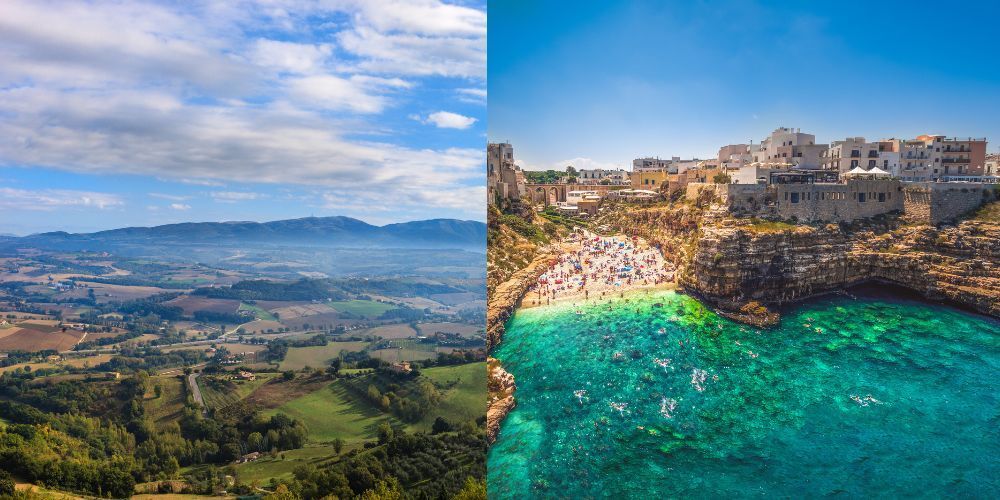
The destinations we propose are all reachable from the north to the south of Italy, not forgetting our fantastic islands. There are the big cities such as Palermo or Turin, or the small, even lesser-known villages, such as, for example, Scanno, in Abruzzo.
Take some time to imagine yourself strolling through the streets of a quaint old town or relaxing in the crystal-clear waters of the Mediterranean Sea or getting to know a piece of culture. Any of these destinations may suit you: the important thing is to take a few relaxing days in September to recharge your batteries.
10. Visit Turin, in Italy, in September

Turin, the capital of Piedmont, is a city rich in history, art and innovation. The perfect city for some days of relax in September. Located between the Alps and the Po River, Turin offers a fascinating mix of ancient Baroque palaces, renowned museums, gastronomic excellence and a cosmopolitan atmosphere. Here is what not to miss during a visit to the ‘City of the Mole Antonelliana’.
As mentioned, the Mole Antonelliana is the symbol of Turin and you definitely cannot miss it. It is a majestic structure that also houses the National Museum of Cinema. As you climb to its top, you can enjoy a breathtaking panoramic view of the city and the Alps.
On your Turin tour also consider the Royal Palace. Residence of the Savoys, this building is a masterpiece of Baroque architecture. Its frescoed rooms decorated with period furniture tell the story of the Piedmontese monarchy. Don't miss the Sabauda Gallery with its collection of artistic masterpieces.
Second only to the Egyptian Museum in Cairo, the Egyptian Museum in Turin houses one of the largest and most important collections of Egyptian artefacts in the world. Among the most famous pieces are the statue of the Bull God Apis and the Tomb of Kha and Merit.
Located on the Superga hill, this Baroque basilica offers an extraordinary panoramic view of the city. Buried inside are members of the Savoy royal family.
The Valentino Park is the largest public park in Turin, along the banks of the river Po. It houses the Valentino Castle, home to the Faculty of Architecture, and offers green spaces ideal for walks, picnics and relaxation.
Take advantage of the Tickets available below to book your entrance ticket to the Royal Museums of Turin.
Visit the Royal Museum in Turin9. Mantua holiday destination in Italy in September
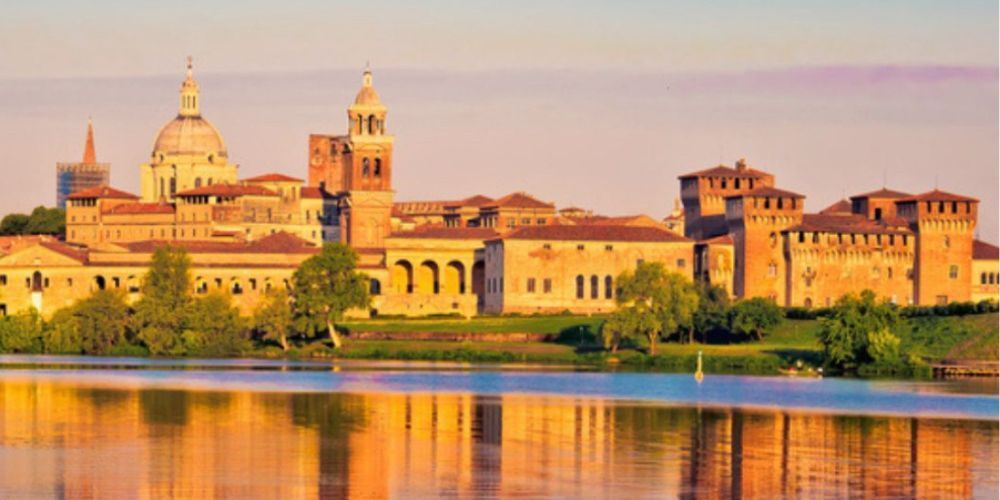
Mantua, located in southern Lombardy, is a city rich in history, culture and architectural beauty. Another town that will allow you to find peace and many interesting things to do during your relaxing days in September. Surrounded by three artificial lakes, Mantua was an important centre of the Italian Renaissance under the Gonzaga family. A UNESCO World Heritage Site, Mantua is an ideal destination for art and history lovers. Here is what to see and do.
The Ducal Palace is one of the largest and most fascinating complexes in Italy. The residence of the Gonzaga family, it comprises numerous buildings connected by corridors, courtyards and gardens.
Built by Giulio Romano, a pupil of Raphael, Palazzo Te is a masterpiece of Mannerism. Originally a pleasure villa of the Gonzaga family, the palace is famous for its frescoes, particularly those in the Sala dei Giganti and the Sala di Amore e Psiche. The surrounding gardens offer an oasis of tranquillity.
Designed by Leon Battista Alberti, the Basilica di Sant'Andrea is a magnificent example of Renaissance architecture. The interior houses important works of art and the Crypt of the Precious Blood of Christ, which according to tradition contains the relics of the blood of Christ brought to Mantua by the Roman centurion Longinu
The beating heart of Mantua, Piazza delle Erbe is surrounded by historical buildings such as the Palazzo della Ragione and the Clock Tower. The square hosts a lively market and numerous cafés where you can relax. Not to be missed is the Rotonda di San Lorenzo, a fascinating and mysterious Romanesque church.
A Baroque jewel, the Teatro Bibiena is known for its extraordinary acoustics and elegance. Wolfgang Amadeus Mozart performed there at the age of 13. Today the theatre hosts concerts, performances and guided tours.
8. Gubbio: between history and nature
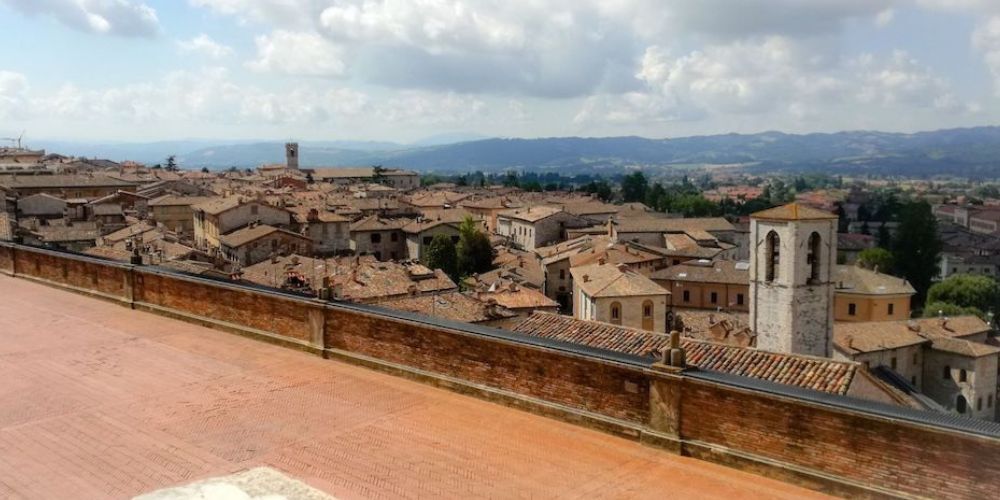
Gubbio, nestled in the Umbrian hills, is a city that exudes history, medieval charm and vibrant local culture. Known for its characteristic historical centre dominated by Mount Ingino and its thousand-year-old tradition, Gubbio promises an unforgettable trip to the heart of Italy.
A good starting point for your visit is the Piazza Grande. It is one of the most beautiful medieval squares not only in Gubbio but in Italy. Surrounded by historical buildings, such as the Palazzo dei Consoli with its 59-metre-high bell tower, it offers a breathtaking view of the town and surrounding hills.
Situated on top of Mount Ingino, the Basilica di Sant'Ubaldo is dedicated to the patron saint of Gubbio. It can be reached by an impressive cable car or a steep walk through the forest. The basilica houses the remains of Saint Ubaldo and offers spectacular views of the city and the valley below.
The Roman theatre is located at the foot of Monte Ingino and is an imposing testimony to ancient Rome. Dating back to the 1st century AD, the theatre has been partially restored and offers a unique perspective on the city's history.
Gubbio also offers the possibility of nature excursions. The surrounding hills and forests offer numerous possibilities for hiking and mountain biking. Routes such as the Franciscan Peace Trail take you through breathtaking landscapes and ancient hermitages.
As everywhere in Italy, savour the delights of local cuisine in Gubbio's restaurants and trattorias. Don't miss typical Umbrian dishes such as tagliatelle with truffles, local cold cuts and traditional desserts such as torta al testo.
7. Some days of total relax in Polignano a Mare
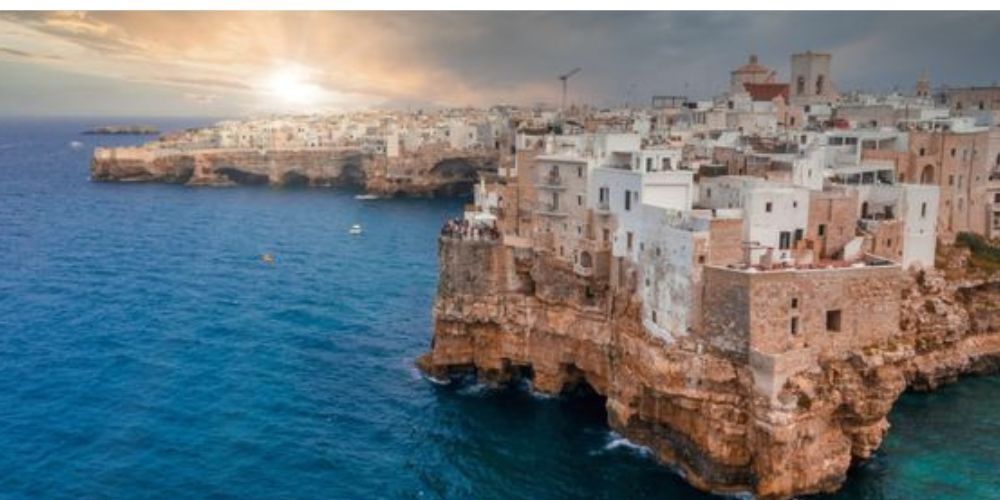
Although in September the summer season is not at its peak, the temperatures will certainly still be great for enjoying a few days at the beach. In fact, you will most likely avoid the August crowds: and that can only be an advantage! For this reason, we recommend a visit to Polignano a Mare in Puglia.
Set on the cliffs of the Adriatic Coast, Polignano a Mare is a town that enchants with its crystal-clear sea, sea caves, and its characteristic historical centre. Known for its breathtaking views and rich history, Polignano a Mare offers an unforgettable experience for those seeking natural beauty and authenticity. Here is what to see during a visit to this beautiful Apulian town.
The historic centre is a labyrinth of winding alleys, whitewashed houses and hidden courtyards overlooking the sea. Strolling through its streets is an experience that takes you back in time, between traditional architecture and views of the crystal clear sea.
One of the activities that we absolutely recommend is to visit the various beaches and one that is not to be missed is also known as Cala Porto. It is Lama Monachile and we are sure you have seen it at least once in a photograph. This small beach surrounded by rocks is the symbol of Polignano a Mare. The transparent sea and the characteristic natural archway make this the perfect place to relax in the sun and swim in the turquoise waters.
One of Polignano a Mare's most iconic attractions is also the Grotta Palazzese, a restaurant set in a natural cave overlooking the sea. It is a magical place to enjoy local cuisine while admiring the evocative panorama of waves crashing against the rocks.
Located on the highest point of the city, the Belvedere San Vito offers a breathtaking panoramic view of the Apulian coastline and the Adriatic Sea. It is the ideal place to watch the sunset or simply enjoy the tranquillity of the seascape.
Church of San Vito Martire. This 13th century church is an example of Apulian Romanesque architecture. Inside you can admire frescoes and works of sacred art, while outside, the bell tower dominates the panorama of the old town.
Book the Boat Tour!6. Palermo: glittering and vibrant Sicilian city
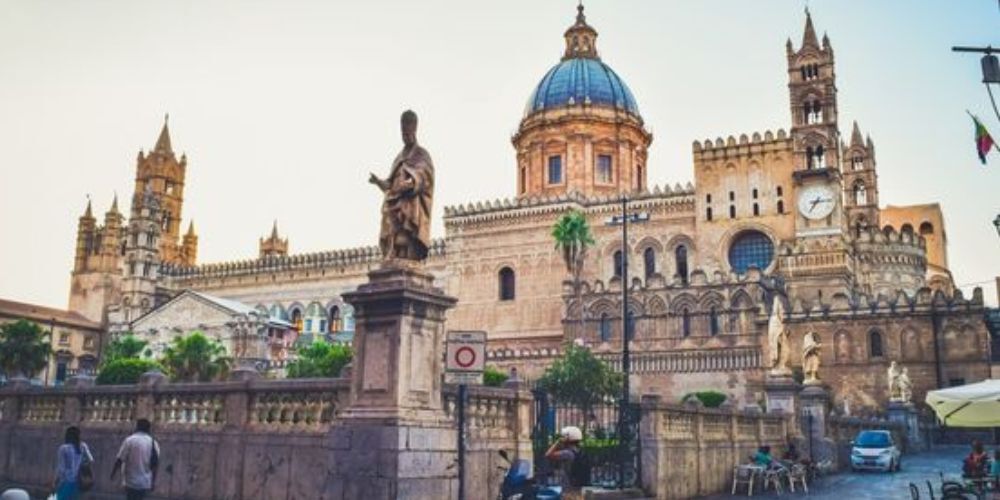
Palermo, the vibrant capital of Sicily, is a city that enchants with its thousands of years of history, breathtaking architecture and vibrant culture. Located along the north-western coast of the island, Palermo is a fusion of Arab, Norman and Baroque influences that are reflected in its monuments, colourful markets and delicious cuisine.
Considered the symbol of the city, Palermo Cathedral combines different architectural styles, including Arab-Norman and Baroque. Don't miss the Palatine Chapel, richly decorated with golden mosaics and Byzantine paintings.
Seat of the ancient Sicilian parliament, the Palazzo dei Normanni is a masterpiece of Norman architecture. The Palatine Chapel inside is famous for its Byzantine mosaics and extraordinary beauty.
The Theatre Massimo is the largest opera house in Italy and one of the largest in Europe. Known for its perfect acoustics and architectural beauty, it offers guided tours to discover its sumptuous interior.
One of Palermo's oldest and liveliest markets, the Vucciria is a labyrinth of stalls selling fresh fish, local produce, spices and handicrafts. It is the ideal place to immerse yourself in Palermo's daily life and sample local delicacies.
A symbolic crossroads in the heart of Palermo's historic centre, Quattro Canti is a Baroque square with ornate facades and statues representing the four seasons, the four queens of Sicily and the four patron saints of the city.
Take some time, perhaps at sunset, to stroll along the Lungomare promenade that offers a splendid view of the sea and Monte Pellegrino.
Also in this city, we recommend that you enjoy the regional cuisine. Don't miss traditional dishes such as pasta with sardines, panelle (chickpea fritters) and Sicilian cannoli.
5. Lesser known, but worth seeing: Sabbioneta
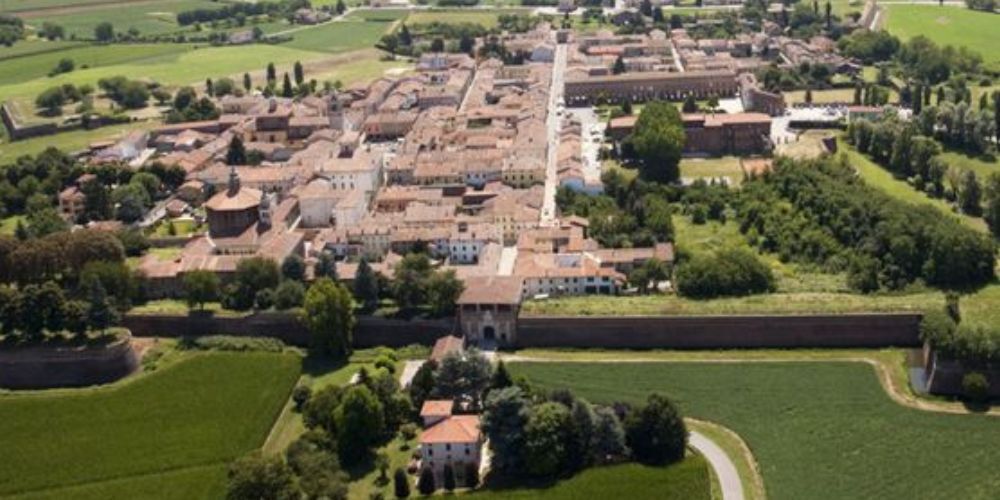
Considered one of the most beautiful Renaissance cities in Italy, Sabbioneta was declared a UNESCO World Heritage Site in 2008. This small jewel, perhaps less well known to the masses, is located in Lombardy and is a very interesting stop-off, to be assessed in September.
Sabbioneta offers perfectly preserved palaces, theatres and squares. September, with its mild climate, is ideal for exploring the city walls, the Teatro all'Antica and the Palazzo Ducale, immersing yourself in the history and art of the Renaissance. Take long walks and also enjoy some relaxation.
Over the centuries, this town has retained the original star shape of the city walls. Also worth seeing are the Synagogue and the Churches of Santa Maria Assunta and Beata Vergine Incoronata.
Consider that Sabbioneta is about forty minutes from Mantua, the town we recommended at paragraph nine. You can consider combining the two destinations and see them in a single holiday.
4. Enjoy a few days' holiday in Scanno, Abruzzo
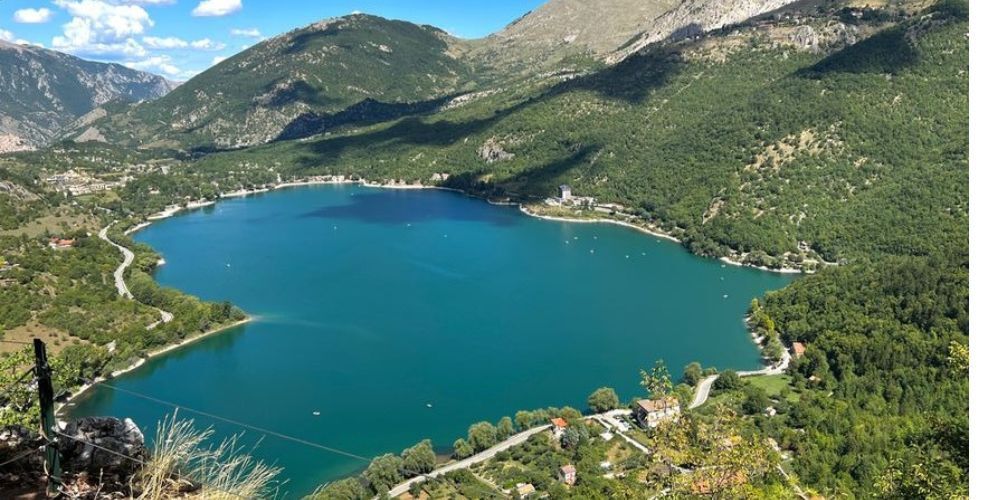
Scanno, located in the heart of the Abruzzo National Park, is a picturesque mountain village known for its authenticity, the beauty of its landscapes and the richness of its culture. Surrounded by majestic mountains and crystal clear lakes, Scanno offers a unique experience for those seeking tranquillity, unspoilt nature and centuries-old traditions. This is what makes Scanno a place to consider for your relaxing days in September.
Lake Scanno, known for its heart shape, is one of the most beautiful lakes in central Italy. Surrounded by beech forests and mountains, it offers breathtaking scenery and the possibility to take walks along its shores or rent a boat to explore it from the water.
Scanno's historical centre is a labyrinth of narrow cobbled alleys, stone houses and ancient palazzi. Stroll through its streets: it will be like stepping back in time, amid traditional architecture and the atmosphere of bygone days.
Located in the historical centre, the Abruzzo Ethnographic Museum offers an interesting insight into Abruzzo's culture and traditions. It displays traditional objects, local costumes and working tools that tell the story of the daily life of the Scanno community over the centuries.
You cannot miss the Rocca dei Rettori. This imposing medieval palace dominates the historical centre of Scanno. Built in the 14th century as the residence of the local governor, today it hosts temporary exhibitions and offers spectacular views of the valley below and the surrounding mountains.
Scanno is a photographer's paradise, with its mountain scenery, heart-shaped lake and traditional architecture. Don't miss the chance to capture the beauty of this village and its surroundings.
Savour the authentic flavours of Abruzzo cuisine in Scanno's restaurants and trattorias. Don't miss traditional dishes such as ‘scrippelle “mbusse” (crepes in broth) or “ciambotta” (a vegetable stew).
3- Relax in Sperlonga
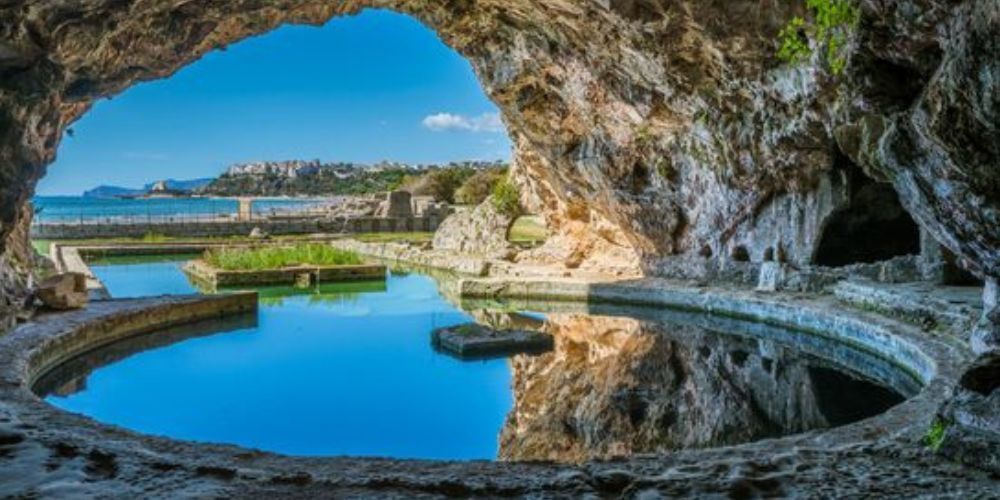
Sperlonga, nestled on the Tyrrhenian coast between Rome and Naples, is a hidden gem that combines breathtaking scenery, thousands of years of history and a relaxed atmosphere. This picturesque seaside village is famous for its white sandy beaches, the crystal-clear waters of the Tyrrhenian Sea and its archaeological treasures. Here is what not to miss during a visit to Sperlonga.
Sperlonga's beaches are among the most beautiful in the Lazio region, with fine sand and transparent waters. The most renowned are the Spiaggia di Ponente (Western Beach) and the Spiaggia di Levante (Eastern Beach), both ideal for sunbathing and snorkelling.
Discovered in 1957, the Grotto of Tiberius is a sea cave adorned with beautiful marble statues and reliefs dating back to the 1st century AD. The artefacts are on display in Sperlonga's National Archaeological Museum, but a visit to the cave itself offers a unique experience of history and natural beauty. Located above is the Villa of Tiberius: a Roman archaeological site offering spectacular views of the sea.
Explore the craft shops in the historic centre to purchase local ceramics, handmade jewellery and other unique souvenirs representing Sperlonga's local handicrafts.
2. The wonders of Orta San Giulio
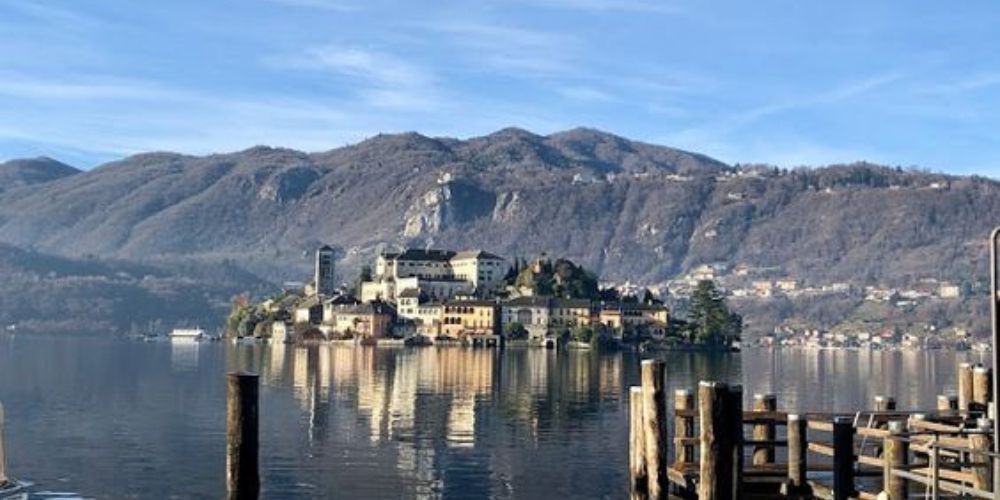
Orta San Giulio, located on the shores of picturesque Lake Orta in Piedmont, is an enchanting village that seems straight out of a fairy tale. With its cobbled streets, pastel-coloured houses and tranquil lakeside atmosphere, this small town is a perfect destination for those seeking peace and beauty. Here is what to see and do during a few days' holiday in September.
The beating heart of the village, Piazza Motta is surrounded by characteristic cafés and shops. From here you can admire a splendid view of the lake and the Island of San Giulio. The square is also the starting point for boats to the island. In fact, a short distance from the main square, the Island of San Giulio is a little gem with its Benedictine monastery and the Basilica of San Giulio. Stroll along the ‘Way of Silence and Meditation’ for a spiritual and relaxing experience.
Located on the Island of San Giulio, this Romanesque basilica is famous for its medieval frescoes and the crypt that holds the relics of San Giulio. The interior of the church is a masterpiece of sacred art and deserves an in-depth visit.
A UNESCO World Heritage Site, the Sacro Monte di Orta is a complex of 20 chapels dedicated to the life of St Francis of Assisi. Situated on a hill overlooking the lake, it offers spectacular views and an atmosphere of peace and spirituality.
In conclusion, even this destination can give you relaxation and rest, during the month of September.
1. Montefalco: between history, panoramas and good wine
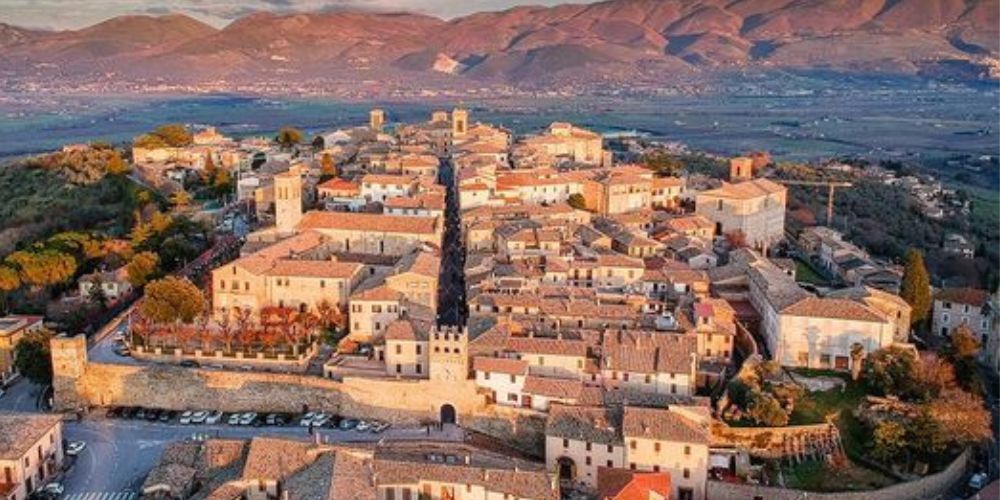
Montefalco, known as the ‘Balcony of Umbria’, is a charming village located in the heart of the region. Famous for its fine wines and breathtaking views, Montefalco will offer you a unique experience combining art, history and gastronomy. Perched on a hill, in this medieval town you will enjoy spectacular views of the Umbrian valley and a pleasant atmosphere of yesteryear.
The starting point we recommend, once you have unpacked your bags, is the Piazza del Comune, a picturesque central square surrounded by historic buildings and cosy cafés. Here you will find the Town Hall, dating back to the 13th century, and the Church of St Augustine, with its Gothic frescoes.
Then, located in the former Church of St Francis, you will find the Museum of the Saint. It houses a collection of sacred art and frescoes from the Umbrian Renaissance. Among the masterpieces are works by Benozzo Gozzoli, including the famous cycle of the life of St Francis.
The Church of Sant'Agostino, located just outside the city walls, is renowned for its 15th-century frescoes and simple yet elegant architecture. It is a place of peace and recollection, immersed in the tranquillity of the Umbrian countryside. Perhaps it is just what you are looking for on these September afternoons!
Montefalco offers numerous vantage points from which one can admire an incredible view of the Umbrian Valley and surrounding towns such as Spoleto, Trevi and Assisi. The walk along the city walls is an experience not to be missed, especially at sunset.
As mentioned, this town is famous for its wine production, especially Sagrantino wine. It is a robust and aromatic red wine unique to the region. Visit local wine cellars for wine tastings, exploring traditional winemaking techniques and discovering the secrets of this oenological excellence.
About the author
Written on 01/08/2024


Lorenzo Braccini
Find out where to go on holiday in September in Italy, here are ten destinations for your days of relaxation.